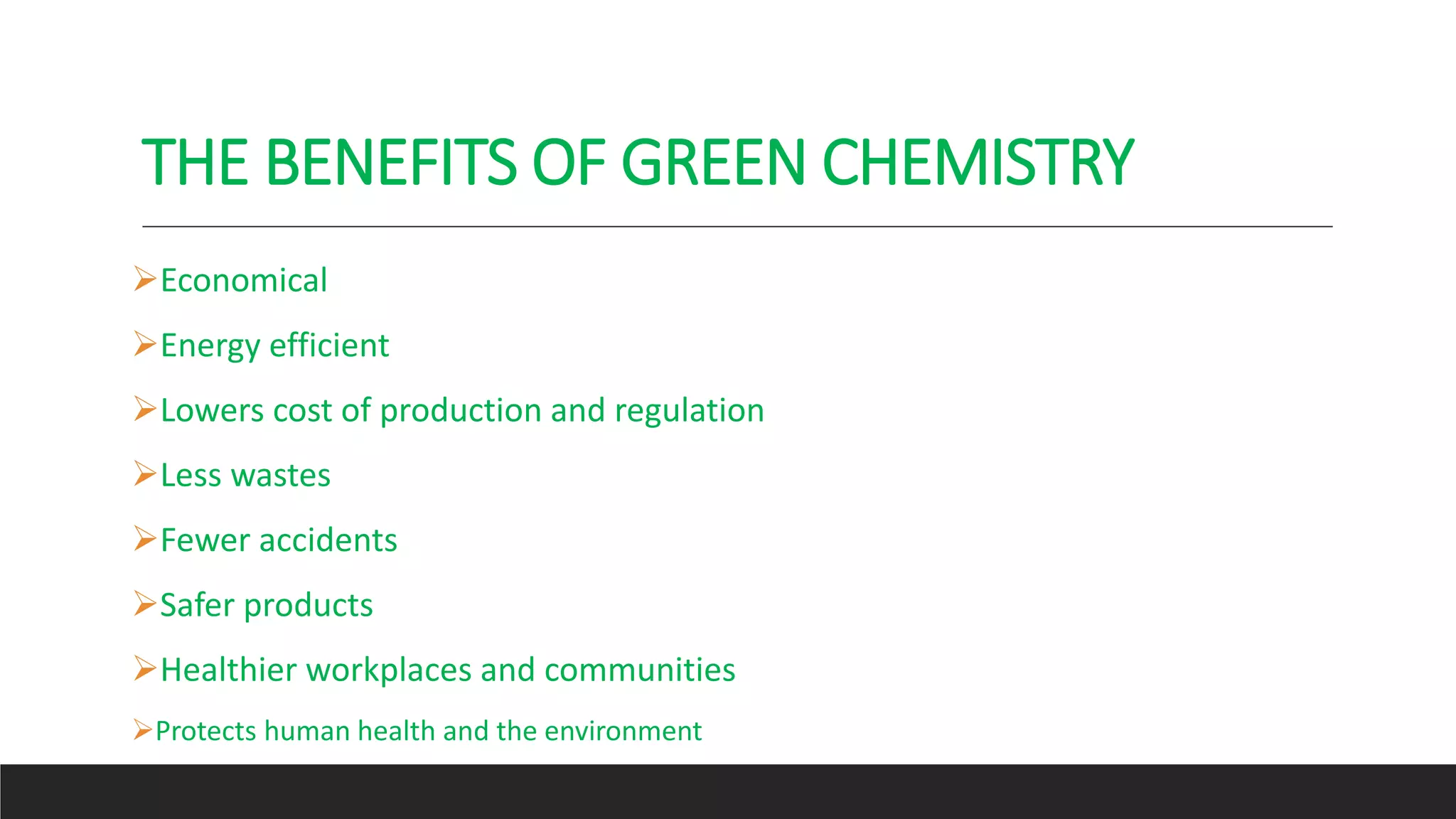The document discusses microwave assisted reactions for green chemistry. It begins with introducing green chemistry and its focus on reducing hazardous substances. It then discusses how microwave heating allows for faster, more energy efficient reactions by directly coupling with polar molecules. Key advantages of microwave heating include uniform and rapid heating throughout the reaction mixture. This leads to increased reaction rates, higher yields, and less waste generation compared to conventional heating methods. The document provides an overview of the mechanisms of microwave heating and its applications in organic synthesis.



































